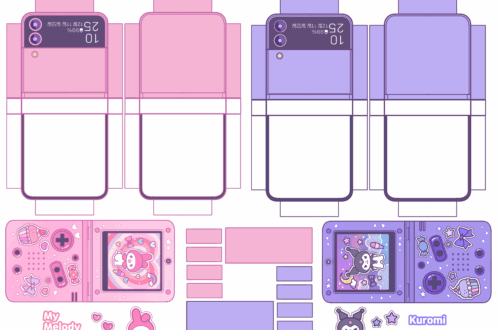Documents featuring pumpkin shapes designed for printing and subsequent physical creation through cutting are widely available. These resources provide outlines, often in varying sizes and complexities, intended to be transferred to paper or cardstock, then cut out to produce physical pumpkin forms. Example uses include seasonal decorations, craft projects for children, or templates for larger constructions.
The significance of such resources lies in their accessibility and versatility. They offer a cost-effective method for generating themed decorations or educational materials. Historically, similar stencils and templates have been utilized for diverse crafting purposes, with digital versions expanding the ease of access and customization options. Their benefit extends to facilitating creativity and providing readily available visual aids for various activities.
The following discussion will explore the various types of designs available, appropriate uses for these printed shapes, and techniques for achieving optimal results during the printing and cutting processes. This will further examine the digital sources for acquiring these templates and creative applications across different settings.
Frequently Asked Questions
This section addresses common inquiries related to the sourcing, application, and optimal utilization of pumpkin-shaped templates designed for printing and cutting.
Question 1: What file formats are commonly used for pumpkin cut out printable templates?
Common file formats include PDF, JPG, and PNG. PDF ensures consistent printing across different devices, while JPG and PNG are suitable for image editing and resizing prior to printing.
Question 2: What type of paper is recommended for printing pumpkin cut out templates?
Standard printer paper is adequate for basic use. Cardstock or heavier paper is recommended for increased durability, particularly when the cut outs are intended for decorative purposes or repeated handling.
Question 3: How can the size of a pumpkin cut out template be adjusted before printing?
Image editing software or the print settings dialogue box typically allows for scaling adjustments. Specify the desired dimensions or percentage to increase or decrease the size of the template prior to printing.
Question 4: What tools are required for effectively cutting out the printed pumpkin shapes?
Sharp scissors or a craft knife are recommended. A cutting mat is advisable when using a craft knife to protect the work surface. Precision cutting is facilitated by smaller scissors or craft knives with replaceable blades.
Question 5: Where can one reliably source pumpkin cut out printable templates?
Reputable sources include educational websites, crafting blogs, and online marketplaces specializing in digital design assets. Ensure the license permits the intended use, whether for personal or commercial projects.
Question 6: Are there considerations regarding copyright when using pumpkin cut out printable templates?
Copyright restrictions vary. Many templates are offered for personal use only. Commercial use may require a license or attribution to the original designer. Carefully review the terms of use associated with each template.
In summary, selecting appropriate file formats and paper types, adjusting template sizes as needed, employing suitable cutting tools, verifying source reliability, and respecting copyright considerations are crucial for successful and responsible utilization of pumpkin cut out printable templates.
The subsequent section will delve into specific creative applications of these cut outs across diverse settings.
Tips for Optimal Use of Pumpkin Cut Outs Printable
This section provides guidelines for maximizing the utility and aesthetic quality of digitally sourced pumpkin-shaped templates used in physical crafting projects.
Tip 1: Select High-Resolution Images. Prioritize templates with a minimum resolution of 300 DPI to ensure clarity and prevent pixelation upon printing, particularly for larger-sized cut outs.
Tip 2: Optimize Print Settings. Adjust printer settings to “Best” or “High Quality” for improved color fidelity and sharper lines. Calibrate the printer if color accuracy is paramount.
Tip 3: Utilize Appropriate Paper Weight. For applications requiring durability, such as decorations, employ cardstock or heavy-weight paper. Standard printer paper is suitable for stencils or temporary uses.
Tip 4: Employ Precision Cutting Tools. Invest in sharp scissors or a craft knife with a replaceable blade. Utilize a self-healing cutting mat to protect work surfaces and maintain blade sharpness.
Tip 5: Incorporate Layering Techniques. Enhance visual interest by layering multiple pumpkin cut outs of varying sizes and colors. Adhere layers with acid-free adhesive to prevent discoloration over time.
Tip 6: Explore Embellishment Options. Augment plain cut outs with decorative elements such as glitter, paint, markers, or fabric scraps. Secure embellishments with appropriate adhesives.
Tip 7: Preserve and Store Templates. Keep printed templates in a flat, dry environment to prevent creasing or damage. Consider laminating frequently used templates for increased longevity.
Adherence to these guidelines will contribute to the creation of visually appealing and durable pumpkin-shaped cut outs suitable for a wide range of applications.
The concluding section will summarize the benefits and applications discussed, reinforcing the value of these templates in diverse crafting contexts.
Conclusion
This discussion has provided an overview of pumpkin cut outs printable, encompassing file formats, recommended materials, size adjustment techniques, cutting methods, sourcing options, and copyright considerations. Furthermore, guidelines for optimal utilization, including image resolution, print settings, paper weight, cutting tools, layering, embellishments, and storage, were addressed. The information presented aims to equip individuals with the necessary knowledge for effective and responsible use of these resources.
The accessibility and versatility of pumpkin cut outs printable render them a valuable asset for educational, decorative, and creative endeavors. Their continued relevance lies in their adaptability to diverse project requirements and the potential for fostering artistic expression across varied skill levels. Future developments may include augmented reality integrations for enhanced visualization and customization, further expanding the utility of these templates in both digital and physical contexts.
